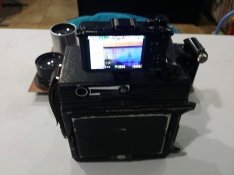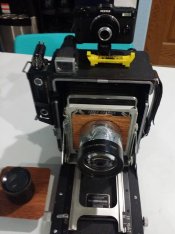cliveh
Subscriber
- Joined
- Oct 9, 2010
- Messages
- 7,650
- Format
- 35mm RF
When looking at Fox Talbots early cameras, I think it fascinating that he employed a cork in a hole at the front of the camera to judge the image and perhaps exposure for his photogenic drawings. It makes me wonder if in large format photography it could be advantageous to employ this technique to view the image as projected prior to exposure, rather than the alternative of viewing the image from the back on a ground glass screen. Any thoughts?
Dead Link Removed
Dead Link Removed





